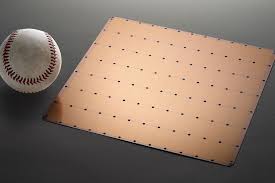
Breaking News
We Americans Need to Dig Deep into Historical Perspective
 A timeless clip of Michael Burry explaining how he used credit default swaps...
A timeless clip of Michael Burry explaining how he used credit default swaps...
 The next financial crisis won't start in a bank lobby. It's already brewing in the market
The next financial crisis won't start in a bank lobby. It's already brewing in the market
Top Tech News
 This tiny dev board is packed with features for ambitious makers
This tiny dev board is packed with features for ambitious makers
 Scientists Discover Gel to Regrow Tooth Enamel
Scientists Discover Gel to Regrow Tooth Enamel
 Vitamin C and Dandelion Root Killing Cancer Cells -- as Former CDC Director Calls for COVID-19...
Vitamin C and Dandelion Root Killing Cancer Cells -- as Former CDC Director Calls for COVID-19...
 Galactic Brain: US firm plans space-based data centers, power grid to challenge China
Galactic Brain: US firm plans space-based data centers, power grid to challenge China
 A microbial cleanup for glyphosate just earned a patent. Here's why that matters
A microbial cleanup for glyphosate just earned a patent. Here's why that matters
 Japan Breaks Internet Speed Record with 5 Million Times Faster Data Transfer
Japan Breaks Internet Speed Record with 5 Million Times Faster Data Transfer
 Advanced Propulsion Resources Part 1 of 2
Advanced Propulsion Resources Part 1 of 2
 PulsarFusion a forward-thinking UK aerospace company, is pushing the boundaries of space travel...
PulsarFusion a forward-thinking UK aerospace company, is pushing the boundaries of space travel...
 Dinky little laser box throws big-screen entertainment from inches away
Dinky little laser box throws big-screen entertainment from inches away
 'World's first' sodium-ion flashlight shines bright even at -40 ºF
'World's first' sodium-ion flashlight shines bright even at -40 ºF
1.2 Trillion Transistors on a Wafer-Scale AI Chip

It is 56x larger than any other chip. It delivers more compute, more memory, and more communication bandwidth. This enables AI research at previously-impossible speeds and scale.
The Cerebras Wafer Scale Engine 46,225 square millimeters with 1.2 Trillion transistors and 400,000 AI-optimized cores.
By comparison, the largest Graphics Processing Unit is 815 square millimeters and has 21.1 Billion transistors.
Andrew Feldman and the Cerebras team have built the wafer-scale integrated chip. They have successfully solved issues of yield, power delivery, cross-reticle connectivity, packaging, and more. It has a 1,000x performance improvement over what's currently available. It also contains 3,000 times more high speed, on-chip memory, and has 10,000 times more memory bandwidth.
It has a complex system of water-cooling. It uses an irrigation network to counteract the extreme heat generated by a chip running at 15 kilowatts of power.

 The AI money machine!
The AI money machine!

